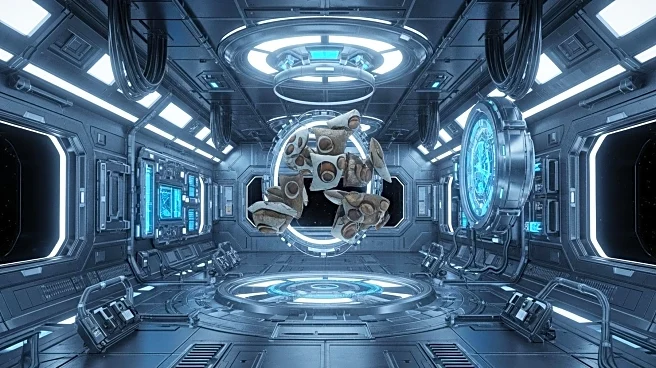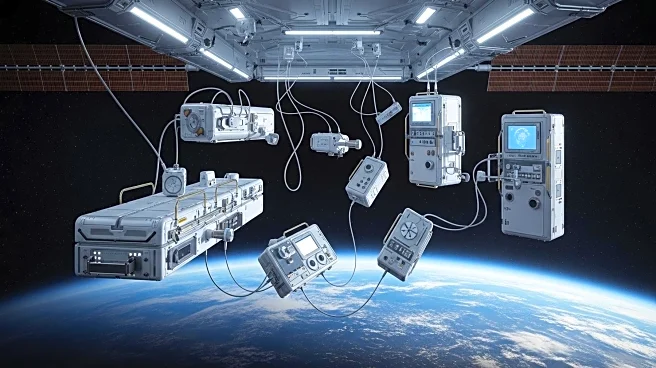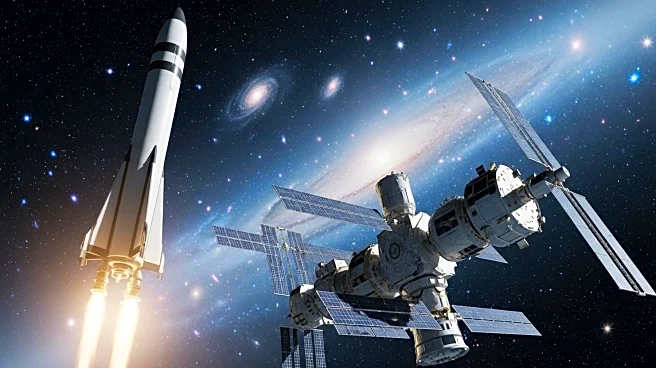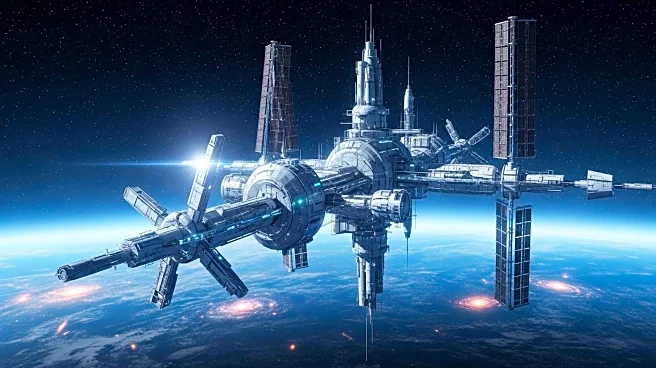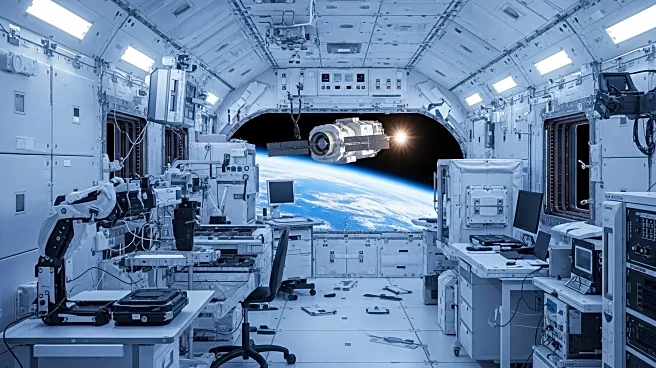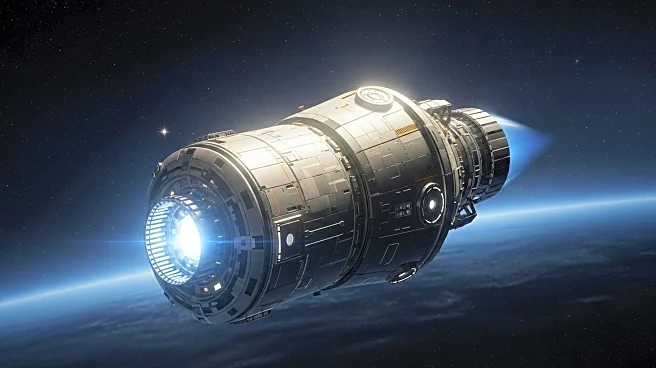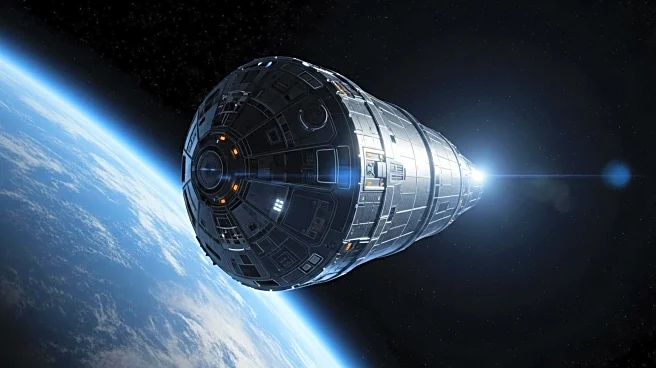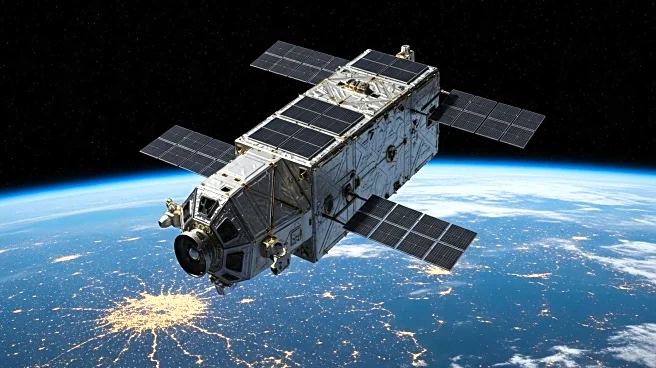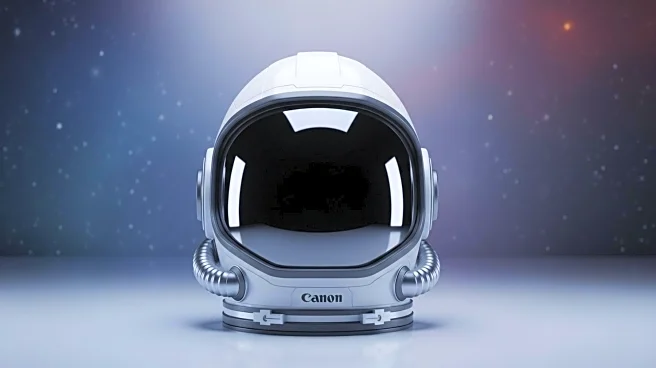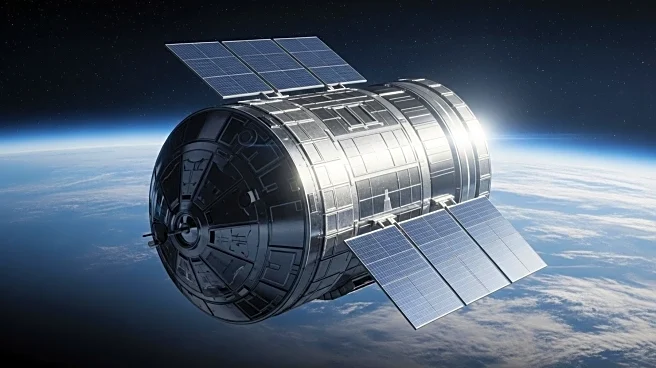What's Happening?
NASA astronauts aboard the International Space Station have embarked on a new space agriculture study, utilizing seed pillows as part of the VEG-03 experiments. This initiative, which began with the Crew-11 mission launched on August 1, 2025, involves growing various plants such as Wasabi mustard greens, Red Russian Kale, and Dragoon lettuce inside a chamber known as Veggie. The Veggie system uses LED lights to provide the necessary spectrum for plant growth and features flexible bellows to create a semi-controlled environment. Astronauts plant seeds into fabric pillows filled with a clay-based growing medium and controlled-release fertilizer, monitoring the plants and documenting their growth. The fresh produce harvested will be consumed by astronauts, with some samples frozen for analysis on Earth.
Why It's Important?
This space agriculture study is crucial for future long-duration space missions, such as those to the Moon and Mars, where fresh food will be essential for astronaut nutrition and morale. By validating different crops, NASA aims to diversify astronaut diets and give crew members more control over their food sources. The techniques developed in space may also enhance agricultural practices on Earth, particularly in indoor crop cultivation. Additionally, these methods could be adapted for horticultural therapy programs, offering new gardening experiences to individuals who may not have access to traditional methods.
What's Next?
NASA plans to continue monitoring the growth and nutritional content of the crops grown in space, with the potential to expand the variety of plants cultivated. The success of these experiments could lead to more advanced agricultural systems for future space missions, ensuring sustainable food sources for astronauts. On Earth, the findings may influence indoor farming techniques and therapeutic gardening practices, providing broader benefits beyond space exploration.
Beyond the Headlines
The implications of space agriculture extend beyond immediate nutritional benefits for astronauts. The study contributes to scientific knowledge about plant growth in microgravity, which could lead to breakthroughs in understanding biological processes under extreme conditions. This research not only supports space exploration but also offers insights that could improve life on Earth, particularly in areas like sustainable agriculture and therapeutic practices.
